Introduction
Amazfit has been on our radar for at least a couple of years now. The original Amazfit Bip is the wearable that managed to sway this reviewer, personally, away from much more high-profile and expensive alternatives, like the Samsung Gear S3. And the Amazfit GTR still remains my daily driver. And it should be noted that this is not motivated by a lack of other options. The smart wearable market is experiencing a sort of renaissance at the moment. Even so, Amazfit's or rather Huami's products continue to hold a particularly special place in the ever-growing wearable niche.

It is hardly surprising that we were excited to check out the Amazfit T-Rex. It is a rugged wearable that seems to combine everything that we think is great about existing Amazfit devices with a really tough exterior. Suitable for a more active, outdoorsy lifestyle.
Most people, us included, hold Amazfit products in high regard for their amazing battery life. Just like the slick and elegant GTR, the T-Rex retains this amazing energy efficiency, easily offering 20 days of use on a single charge.
This is all made possible through years of component and design refinement by manufacturer Huami. A name that's not particularly well-known, yet says a lot about the pedigree of the T-Rex and instills a lot of confidence. Not counting the Apple Watch, Huami is actually the largest wearable device company in the world, with over 50 million units sold and over 16% global market share. Besides its own Amazfit fashion-conscious brand, Huami is also responsible for Xiaomi wearables as an exclusive provider. As such, it is the company behind the popular Mi Band line of products.
Amazfit T-Rex specs
- Body: 47.7 x 47.7 x 13.5 mm, 58g (with strap), non-standard strap; 5 ATM water resistance (supports swimming) and STD-MIL-810G certification; Gorilla Glass 3 front + oleophobic coating; Polymer body, metal buttons
- Display: 1.3" AMOLED, Resolution 360 x 360 pixels, support AOD watchface
- OS: Proprietary; Support for Android 5.0 and above, iOS 10.0 and above
- Battery: 390mAh (20 days typical use, 66 days basic watch mode, 20 hours continuous GPS tracking)
- Connectivity: Bluetooth 5.0 + BLE; GPS+GLONASS
- Misc: BioTracker PPG biological tracking optical sensor, 3-axis acceleration sensor, geomagnetic sensor, Ambient light sensor
Back to the T-Rex, though, since it is more than a mere Mi Band clone. In fact, the skin-deep assumption that it is merely an Amazfit GTR inside a different shell is not entirely true either. Both of these parallels, however, are valid and important.
At its core, the T-Rex, just like the Mi Band and the GTR appears to be based on the same core of sensors and components. This is important to note since none of these devices is technically s "smartwatch". The lack of advanced functionality and a third-party app ecosystem technically makes the T-Rex a mere "smart wearable" rather than a full-featured smartwatch. This means that you are stuck with the default out-of-the-box features and functions unless Amazfit decides otherwise with an OTA update. What you gain, in return, is much more optimized and efficient operation. And through that, in part, the amazing 20 day plus battery life. A feat unattainable to current full-featured smartwatches.

For many, me included, this sacrifice in functionality is justified for the sake of battery life and the convenience it affords. Plus, just like other Amazfit "smart wearables", the T-Rex is plenty feature-rich. Definitely enough for most wearable users. It handles both notifications and calls in a very efficient manner and has a plethora of activity and fitness tracking features. Chuck a surprisingly potent GPS receiver in the mix and you end up with the T-Rex - a well-rounded and value product. Follow along on the next few pages as we dig-down into exactly what makes it tick, what it gets right and what it misses the mark on.
Unboxing
Amazfit products aren't necessarily premium by nature. Good value is the main goal here. Even so, the company has never skimped on presentation. The T-Rex ships in a solid two-piece box, complete with a silky-smooth finish. The internal layout retains the same level of quality and is a neck above what you would see from a run-of-the-mill cheap Chinese wearable. Things are still kept within reason, though, so as not to unnecessarily ramp-up costs. Like the fact that all the fancy and colorful graphics and text printing is limited to an outside cardboard box - the cheaper approach.

There is no accessory bundle to speak of here - you just get the watch, which sits in its own, well-protected niche in the box and a USB magnetic charging stand, with two pogo pins. No additional straps or anything of the sort. With a current retail price tag online below $150, we really can't ask more of the Amazfit T-Rex. You should keep that value price tag in mind going forward with the review, as well.
Design and materials
The Amazfit T-Rex is unapologetic in its rugged look. The G-Shock design inspiration is apparent. But that just means that the T-Rex is following a particular ongoing wearable and watch fashion trend. That is to say that this look has now become iconic and transcended the G-Shock brand. It is very particular in its styling and by design polarizing. Make of that what you will.

We think that Huami nailed the look they were going for. Weight, however, is a different subject. The Amazfit T-Rex is really light for its size and design. Again, whether this is something that would appeal to you is a matter of personal preference. Objectively, though, even the smaller traditional G-Shock and similar watches tend to be over 70 grams in weight. Often times, hovering around the 100-gram mark. If you expect a familiar heft to go with the familiar rugged design, then the T-Rex might fail to deliver.

Light as it may be, the Amazfit T-Rex does live up to its name in terms of build quality. It can definitely be considered "tough", depending on your understanding of the term. Like we already said, its polycarbonate body is light. In fact, surprisingly so on the first impression.
Fancy material names aside, it is also essentially plastic. It will undoubtedly scratch and scuff over time. But, so will most metals and their finishes. In fact, you can often see us stand behind a good plastic build. This is one of those cases.

A tough watch like this is meant for a tough life. And the fact is that a solid black plastic shell is going to show a lot less signs of the inevitable scuffs it will pick up than a painted metal would. We can only assume that the other color options are made of uniformly colored polymer, as opposed to being applied as a top finish.
The markings and text on the front of the watch are also not going anywhere any time soon since they are deeply indented into the plastic and also painted-in using a careful ink-filling process. As it currently stands, the only visible metal bits on the T-Rex are the four screws on the front, the four buttons, and the studs, holding the strap in place.

The simpler plastic construction probably helped Huami with the impressive ingress protection ratings of the T-Rex. It is not only rated for up to 5AT of water resistance, but also covers the STD-MIL-810G certification. The T-Rex is validated to last up to an hour and a half at -40 degree temperatures, and its heat resistance should go up to a whopping 70 degrees. The MIL-STD testing also validated it for 240 hours of humidity resistance and 96 hours of salt spray. Even though Huami makes it pretty clear on its website that some of these conditions can still damage the T-Rex and are not recommended, these figures are mighty impressive.
Our point here being that polycarbonates were probably the only option that would manage to cover all of these standards, within the price point of the Amazfit T-Rex. The material is also easy enough to mold to keep the actual parts list down to a minimum. This makes the protective convex design easier and cheaper to pull off and also leaves fewer gaps to seal for water resistance.

The display of the T-Rex is covered with Gorilla Glass 3, which is confidence-inspiring. Especially seeing how an Amazfit GRT, daily-driven for over a year, currently shows no damage on its Gorilla Glass 3 front glass. The advertised oleophobic coating on top, though, could use some more work. The T-Rex gathers plenty of grease and dirt. Though, its particular shape is clearly aiding the process, as well. You can expect plenty of lint to get trapped all over the place on its sharp shapes and angles. Just par for the course with a rigged wearable design.
Display and controls
The Amazfit T-Rex is equipped with a 1.3-inch AMOLED panel. With a resolution of 360 x 360 pixels, it delivers a perfectly sharp picture. It is also bright enough to remain perfectly usable outdoors, even under direct sunlight. Automatic brightness adjustment is handled by an under-display light sensor. It is responsive and works well. Unfortunately, the display is too small to properly measure with our equipment and validate our praise with numbers.
It is probably the same panel that Huami is also using in the Amazfit Verge - a more versatile device, a bit closer to the "smartwatch" end of the wearable scale, which is considered a "flagship offer". It should be noted, though, that the Amazfit GTR offers a bigger 1.39-inch, 454x454-pixel OLED in its bigger 47mm variant. That's good to know, if a bigger display is higher on the priority scale for you than the T-Rex's rugged exterior. Since feature-wise, as well as price-wise, the T-Rex and GTR are not far apart. We'll definitely be bringing that comparison up again throughout the review.

We only have good impressions from the T-Rex's display, aside from the criticism we already offered for its oleophobic coating. It not only looks good, with punchy and vibrant colors, thanks to its OLED nature, but is also easy on the battery. Of course, Huami could have gone for something more "unconventional", like the transflective LCD on the Amazfit Bip for even better power-savings. That would have meant sacrificing on color and the overall premium look of the panel. We are glad the T-Rex got the flagship treatment instead.
Touch accuracy and sensitivity on the display are a touchy subject on a wearable that, by design, is more likely to be used with some kind of gloves on. Silly puns aside, this is another hard-to-test aspect and our experience was a mixed bag. Individual elements on the display are kind of hard to accurately press, mostly due to its size. Thankfully, most of the UI is big enough and swipes are the main method of operation. Hence, with a bare finger, we have little complaints. Introduce some moisture into the mix, like sweat or water and it basically becomes unusable. Same goes for most gloves. We did get away with using thin rubber ones. Winter or professional work gear is a no-go.

Thankfully, the T-Rex also has four physical buttons to fall back on. We really appreciate their inclusion. Not only do they allow access to most of the UI elements without using the touchscreen, but they also add to the rugged look of the wearable.

The buttons are big, easy to find and feel-out, thanks to a textured finish and, like we already said, manage to substitute most touch operations. Only a few things, like the quick toggles in the drop-down shade and the occasional oddly-positioned button inside a sub-menu or feature, can not be triggered by the physical keys. That's one of the only issues we have with them. The other being their mushy feel. A more positive tactile feedback when clicking would be appreciated.

Finishing off the list of controls on the T-Rex, we have the BioTrackerTM PPG Bio-Tracking Optical Sensor on the back of the unit. It is a familiar sight for Huami wearables and is somewhat reliable in action. Physically, the decision to mount it on a separate protruding surface of its own on such a thick wearable as the T-Rex seems a bit weird. However, that's a functionally optimal choice, since it keeps the sensor itself as close to your skin as possible for proper measurements.
Comfort
A very subjective topic for sure. This will come down to personal preference. Here are the realities of the Amazfit T-Rex though: At 13.5 mm, it is very bulky. It can't really fit comfortably, or often at all, under a shirt sleeve and wearing it while sleeping can be unpleasant. Upper body sports or activities often result in bumps and snags.
On the flip side, it is very light. Both a potential plus and a minus, depending on your expectations. Due to its low weight, it does not strain the wrist even with active movement. It does cover a very large surface area, though and can retain moisture and aggravate sweat.

The included strap is very soft and elastic, has practically no weight to it, yet feels quite sturdy. It is a highlight feature of the Amazfit T-Rex. It feels super comfortable to wear. It can also cause a lot of sweating due to its wide profile. However, it's grooved inner surface goes a long way in preventing the strap form sticking to your wrist and creating unpleasant drag.
The one major downside of the T-Rex strap is that it uses a non-standard attachment design to the main body of the watch. Hence, you can't swap it out or replace it in the event of damage with a generic alternative.
Features and UI
Smart wearables have come a long way in terms of features. The line between these and what would be considered proper "smartwatches" has never been thinner. In fact, unless you need third-party downloadable apps, like the ones offered by Google's Wear OS or Samsung's Gear platform, you really should consider the benefits of going the "smart wearable" route, for the extra efficiency and battery life. Cost-savings, as well.

The T-Rex has a custom OS at its disposal. One specifically meant to make the most out of its hardware. A few minor feature and interface differences aside, it is the same experience found on the Amazfit GTR. Huami has had plenty of time to refine this OS and all of its various features and we can safely say, from experience, that things are a lot smoother now than they were originally, back when the GTR released. The T-Rex gets to inherit all of those iterative refinements out-of-the-box.
Overall, the experience is quite similar to a true "smartwatch" one. Menu structure, swipe gestures, and core functionality are all there. For most, a smart wearable will have to do a few core tasks to be functional. These mostly boil down to handling calls, messages and general notifications, activity, sleep and fitness tracking and last, but not least, acting as a stylish and customizable fashion accessory.

Let's start with the general Amazfit UI and general control scheme and continue from there. Unless you have your display turned to the more wasteful always-on mode, you will typically have to wake it up with either a wrist gesture or by pressing any of four physical buttons. Both of these have been greatly improved since the early days of the Amazfit GTR, we can remember. The wrist gesture is very dependable. There is still room for improvement and it is nowhere near Apple Watch levels of magic. But, we would say that 85% of the time, the T-Rex wakes up when we want it to.
Believe it or not, the manual button wake-up scheme is also more-refined now. Originally, only one button on the GTR woke its display up. Now, pressing any one of the four buttons on the T-Rex will do. Once the display is on, pressing the Back button turns it off, without having to wait for your custom timeout to kick-in.
Pressing the top button a second time from the main watch face fires up a quick action. It can be set to one of the following: Workout, Status, Heart Rate, Weather, Notifications, Event reminder, Alarm, Compass, Countdown, Timer, Music, Find My Phone, and Alipay. The latter will probably not be an option on international T-Rex units as we got our review unit from China.
Since we are on the topic of contactless payments, the T-Rex does not have NFC and its Alipay support is pulled-off via barcode scanning from the wearable's display.
Thanks to the T-Rex's four physical buttons, as well as some extra thought into UX, unlike the GTR, the T-Rex has proper back behavior. Pressing the back button does exactly the same as swiping left to right. On the left side - the up and down buttons also work as you would expect. Combined, the four together can effectively navigate through almost every menu of the T-Rex.

The system is not exactly flawless, though. The main "app" menu on the T-Rex is accessed by swiping from right to left on the watch face. There is no alternative way to do that with the physical buttons.
That means you have to swipe at least once across the screen to access any of the features on the watch - and the touchscreen won't accept input when you have gloves on.
Once you are past that initial swipe, you can navigate the entire UI using only the four physical buttons.
The order of the items in the main menu is subject to rearrangement via the Amazfit phone app and you can hide the items you don't need.
For further ease of use, the T-Rex has a couple of quick info panes, accessible by swiping down from the watch face. The first shows you your current step count, distance, calorie count, and progress towards the daily goal. The second one automatically starts an on-demand active heart-rate measurement. Both of these can also be brought up by pressing the physical Down button.
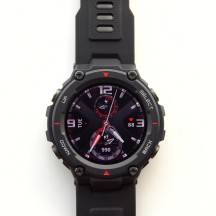



Watch Face • Quick toggles shade • Quick info panes
There is also a quick toggles interface, which can be accessed by swiping or pressing the up button from the watchface. It contains a toggle for a flashlight - which simply makes the screen all white and runs it at max brightness. Next to it is the Power saving mode toggle. In this mode the T-Rex promises up to 66 days of operation on a single charge. It basically disconnects the Bluetooth connection with the phone and only leaves sleep and step tracking on the T-Rex.

Next up on the toggle list - DND mode. It has three settings - Enabled, Timed and Smart. The latter will try to detect when you are sleeping and the automatically toggle Do not disturb. It works reasonably well. About as good as sleep tracking generally works. Which is to say that you can expect the occasional mishap. Timed has its schedule controlled via the Amazfit phone app.
The last two toggles are a brightness control slider and auto-brightness toggle and a lock-screen button. The latter is convenient when you are in a wet environment as it can cause phantom touch inputs.
Interestingly enough, the features found on this part of the T-Rex UI are not accessible anywhere else on the UI menu. It's a real shame that there is no way to navigate these using just the buttons. You can use the buttons to get to this screen, but from there you would need touch input.
That's navigation and basic toggles cleared, on to core functionality. Most smart wearable users want to customize the look of their gadget, at least on occasion if not more often. The T-Rex can only hold a couple of watchfaces in its internal memory. Having a small onboard and non-user-accessible memory chip is just one of the ways Amazfit is saving costs with some of its wearables.
There is a wider selection of watch faces to choose from in the Amazfit app. 30, in total, as of writing this review. Once you select one of these, it gets transferred over one of the two "slots" on the T-Rex. The other one continues to hold a default watchface. The transfer process takes some time, since it essentially involves "flashing" the watchface to the gadget's memory.
Luckily, Huami's Bluetooth communication setup, as well as firmware and watchface formats are rather simple and have been successfully decoded and replicated by third-party developers. That means that you can sideload watchfaces from a thriving and surprisingly rich online modding community with relative ease. More on that on the next page.
Notifications are a core feature of most every wearable. Having experienced there on a daily basis on the Amazfit GTR for over a year now, we can confidently say that the whole setup has come a long way since its infancy. Once again, the T-Rex gets all the benefits from a string of incremental updates in both the Amazfit wearable OS and the companion smartphone app.
Notification capture and transfer is very reliable. The lag in communication is practically non-existent, with the watch often vibrating and lighting-up before the phone gets a chance to. To get everything working correctly, you do need to pay special attention to a few settings, mandated by modern Android security and power-management systems.

Background battery optimization instructions for Samsung
Basically, you need to make sure that the Amazfit app has access to intercept notifications and is also protected from auto-closing by the OS, so its services can run in the background. This is achieved with varying levels of success and through different settings on different Android ROMs.
Generally, Amazfit has done a good job of keeping its code up to date with current Android requirements. There is also a dedicated section in the Amazfit app that tries its best to guide you through the process of disabling battery optimization of your brand of phone. It is useful for pointers, but suffers from poor translations and could use some work.
Once you get all of the settings right and notifications start coming through, consistently, it's just a matter of enabling notification pass-through for all of the apps you want. This is where Amazfit's system shows some flaws.
Generally speaking, Amazfit tries to get the app icon for the notification, as well as its title and short text description. Most times, this works out.
Depending on how the particular app builds and fires Android notifications, though, you can end-up with apps that fail to come-through with their own icon. Also, notification stacking, as performed by most IM's can lead to generic notifications on the watch, only informing you that you "have new meassages". This usually happens with certain IMs when you have unread messages in more than one chat session. It depends on the particular app, though and we still have to note that the whole system has been improved greatly from the early days of the Amazfit GTR. Plus, for the tinkerers out there, there are third-party notification handlers that can, potentially, do a better job at passing notifications to the T-Rex than the default Amazfit app.
As far as the actual notification UI on the T-Rex goes, we have little complaints. The list can be accessed by swiping left to right on the watchface. You can quickly scroll down and flip through a historical list. Clicking the notification shows the title and short text. There is also a clear list button at the bottom of the list. Simple and functional. Though, it should be noted that some competing, full-featured "smartwatch" solutions, like Wear OS and Samsung's devices can take notification handling one step beyond and offer things like instant responses and handling of actionable notifications and prompts on the wearable. That is a bit too fancy for the Amazfit OS.

Incoming calls are a lot easier to handle and the T-Rex does a splendid job of it. When your phone rings you almost instantly get a screen to "Ignore" or "Hang-up", along with pretty-strong vibration. You can also see the caller's name.
Since the T-Rex lacks a microphone and speaker, it can't be used to actually pick up or place calls. Still, it would be nice to see the option to pick up from the phone if it is, say, connected to a Bluetooth device or calls. Something like a headset or car kit.
By the same logic, there is no reason why the T-Rex shouldn't be able to initiate a call, through some sort of phonebook integration. So, there is still room for improvement.
Fitness and activity tracking are likely to be a central use case for the T-Rex. Currently, there are 13 different activities to track, with Triathlon also on the way, via OTA, for an impressive total of 14. Granted, some of these are just slight variations of each other. Still, an impressive selection.
There is an activities menu to start a session from. Some of the activities involve location tracking, so you might have to wait a few seconds for the on-board GPS to get a location lock. This is usually a very speedy process. You can also force them to work without a GPS lock.
Once started, activity tracking has its own status screen to track progress. Notifications can still pop-up during tracking, including those for incoming call. Generally, though, the idea is to keep you focused at the task at hand, with the entirety of the UI being taken up by valuable activity data, like duration and calories. You still get a small digital clock near the top, though. You can also set goals on a per-workout basis in distance, duration or calories.
Activities can be paused, both manually and automatically. The latter is reliable, but not bulletproof. Once an activity is finished, you can either store it or disregard it.
The amount of data logged for most activity types is impressive. For walks and bike rides, we got durations, speeds, calories, accurate GPS location log, as well as some advanced metrics like VO2 max.
Unfortunately, we can't realistically cross-check any of the data. Plus, it should be noted that things like VO2max and other breathing data cannot be tracked with the hardware available on the T-Rex. You need specialized equipment for those kinds of metrics, meaning that these numbers are merely the result of extrapolation algorithms. We do appreciate how cool some of the bar charts and progress bars look in the summary report.
Overall, the T-Rex offers surprisingly in-depth activity tracking features. Huami has put some extra care and attention in here. It's the little things that really make a difference, like the fact that you can set a lap distance for indoor swimming.
If you are into fancy graphics, then you will probably appreciate the Weather menu. Not only does it offer in-depth info on the current conditions, including temperature, wind, humidity, UV rating and sun position on the horizon throughout the day, but there is also a six-day forecast. All of this data is sourced from the Amazfit companion app online, based on your location. It works pretty-well.
Music control is also part of the Amazfit package. It is nothing too fancy and does not support playlists or specific app integration. You get the currently playing song name, play, pause, previous, next controls, as well as a volume slider for the phone. The good news is that the feature worked with every audio player we tried. Our best guess is that it relies on Android control notifications or widgets to get its job done.
The Alarms feature is straight-forward, as you can expect. It is important no note, though, that alarm times can be added from the T-Rex itself, without using the companion app. Makes sense, since these alarms occur just on the T-Rex itself. However, the original Amazfit Bip was annoyingly missing that feature.
Event reminders still need to be added from the Amazfit app. There is no synchronization offered with your regular phone calendar of choice. This feature probably won't see too many users.
Timer and Countdown are very straight-forward. The latter has a bunch of minute presets. You can also set a custom value of your own, all the way up to 23 hours and 59 minutes.
Find my phone uses its own, custom ringtone, as set in the Amazfit app. Finally, there is the Compass feature. It uses the on-board A-GPS and works surprisingly well.
Internals
Before we get into activity and sleep tracking, and performance on the T-Rex, it is important to note what hardware is inside it. Since that will dictate what expectations we can have.
Actual hardware information on a chip level for Amazfit products is hard to come by. However, it is fairly apparent that wearables like the T-Rex, we are currently reviewing, and its Amazfit GTR, GTS and Bip siblings are closely-related in their functionality to other Huami devices. Notably, the all-popular Xiaomi Mi Band series.

The latter tend to be powered by custom, low-energy IoT circuits, courtesy of Dialog (SmartBond DA14580 in the original Mi Band and Dialog 14681 in the Mi Band 3). We bringing-up such specifics to contrast these "smart wearables" to other, more-versatile and powerful solutions that tent to appear in "smartwatches" and more feature-rich products. For instance, the Amazfit Verge is advertised as running on a 1.2Ghz dual-core chipset, of some sorts, with 512GB of RAM and 4GB of storage. This is just one of the defining aspects of a "smartwatch", as compared to a smart wearable. The other side of the story, of course, being the 5 day advertised battery life on the Amazfit Verge, as opposed to the over 20 day one on the T-Rex.
More isn't necessarily universally better in the smart wearable world, though. And in this regard, the T-Rex appears to strike a nice balance. Compared to its Amazfit GTR sibling, though, there are some notable downgrades. Instead of a 6-axis acceleration sensor, you get a 3-axis one. And the air pressure and capacity sensors of the GTR are missing, outright.
Still, the all-important PPG biological tracking optical sensor is there. It is dependable, as far as getting a consistent reading out of it is concerned. The accuracy of said reading, however, is often off. Some times it will measure an elevated heart rate while resting. Other times, it will consider a bike ride leisurely, with a sum 100 bpm measure. That's more of a critique towards optical heart rate measurement tech in general, though.

GPS performance on the T-Rex is a saving grace. Just like the Amazfit GRT, we keep circling back to as a good point of reference, the T-Rex has a dedicated GPS receiver. It's an A-GPS unit, as expected. So, you do need to frequently allow A-GPS data to be fetched from a connected phone for it to work properly. With that taken care of, the actual GPS performance of the T-Rex is stellar.
Tracking performance
Getting a location fix usually takes less than 30 seconds, and the T-Rex rarely loses its fix. Even when it does, which usually happens when entering a building or tunnel, it reacts almost instantly to the fact and then recovers the fix just as quickly. This is probably one of the few aspects in which it surpasses its Amazfit GTR sibling in performance.

The T-Rex website brags about this high level of GPS accuracy, quoting things like a powerful Sony GPS + GLONASS chip solution. However, the more likely explanation for this GPS boost over the GTR is probably a better body design and internal antenna solution. Even the simple fact that the bulk of the T-Rex's shell is plastic, as opposed to metal, could be making a difference.
If you are after optimal GPS performance, the T-Rex is notably the better of the two siblings. It also easily outperforms the older Amazfit Bip in this category.
Activity tracking is, hence, a bit of a mixed bag. Exercise types that are heavily dependent on heart rate data can result in inaccurate numbers. Though, the calorie calculation is typically mostly based around averages on a time basis. So those should be fine.
On the flip side, the stellar GPS performance makes running, walking, trekking, hiking very accurate in terms of distance and plotted paths. The T-Rex even gets elevation metrics mostly right. We can only assume that this applies to skiing as well.
Sleep tracking is very hard to verify or cross-reference in any meaningful way. Still, we can attest that the T-Rex mostly got the fall-asleep and wake-up times correctly. Huami has been hammering-out the kinks in these particular algorithms for a few years now, so we can only assume the stats are at least mostly trustworthy. Whether or not the actual sleep pattern data is of any practical use, though, is a whole other discussion.
Battery life
Despite its noticeably bigger footprint, the T-Rex has a smaller battery than the bigger (47mm) Amazfit GTR model. Only by 20mA or so, which is not significant in practice. Even so, it feels like Huami could have filled the T-Rex shell with a lot more battery. This would have addressed the disconnect between expected and actual weight, for its size.

In regards to battery life, the T-Rex is a true marathon runner. Just like its GTR sibling, it can easily get over 20 days of normal use on a single charge. Huami has a very precise definition of what its "normal" usage patterns is: 150 notifications per day, 30 screen activations, 5 minutes of screen-on operations a day, and 30 minutes of run tracking every other day.
We can confirm that 25 days are achievable in practice. Our usage pattern frequently saw an excess of 150 notifications. Typically, a longer walk or bike ride, every other day, instead of a 30 minute run.
Of course, your mileage will vary, but you can probably count on close to a month without charging. We didn't have time to validate the 66-day claim for the Battery saver mode. Judging by our GTR experience, we have no reason to doubt that claim either.

Charging the T-Rex is quite snappy. You can get a dead unit to full in around two hours. Charging is done via a magnetic base, with a couple of pogo pins. There is only one correct direction, and the magnets make sure you get it right. The design has its flaws and it can be disconnneted with an accidental bump. It is functional, though, and a lot more efficient than wireless charging.
Official Amazfit companion app
In order to make the most out of the T-Rex, you'll need to get the Amazfit app. As far as we understand the history of things, older Amazfit products were supported under Mi Fit at one point. The internet is a bit foggy on the topic. Regardless, the Amazfit app is the current official companion for the T-Rex, as well as most other Amazfit wearables.

Compared to entire wearable suites, like the ones you have to install with Huawei or Samsung smartwatches, the Amazfit single-app approach looks a lot less bloated. There is no need to sideload a plethora of additional background services.
The Amazfit app UI is anything but simple, though. It tries its best to be an all-encompassing fitness, activity, lifestyle, and general "data hub" solution.
On the surface, the main interface looks deceptively simple - three tabs: "Homepage", "Enjoy" and "Profile". Side note - these kinds of weird translations are common all around the Amazfit app, so we won't be pointing them out on every occasion. They range from confusing to outright incoherent. That's a definite minus. Especially since the Amazfit app has been through more than a few updates and iterations already.
Every item you see on the main "Homepage" can be dug into on multiple levels. This looks like a veritable nirvana for numbers and statistics lovers. Graphs, personal and community averages, different period-based views, sharing options. It's all there.
We appreciate that fact that the Amazfit app allows you to edit every individual sleep session entry and set correct start and end times since the T-Rex doesn't always get these right. In fact, if you are willing to put in the manual labor, accurate sleep times are just the tip of the iceberg of things you could potentially track, organize, monitor and share through the Amazfit app.
Options are great and all, but we honestly found ourselves drowning in a sea of menus, searching for a simple, "one stop" interface to go through all of the logged activity sessions. We found one history button, which seems to be the right place to search, but still failed to spot at least a few bike rides that the T-Rex itself clearly had logged.
The app also claims to be syncing all of the data every time we open it. The bottom line here - the Amazfit app is in desperate need on a "simple" interface option.





Insane amount of logged activity data
Once you do get to an activity log, the amount of logged and masterfully visualized data is astonishing. Bars, charts, averages and numbers all over the place. Even if we know, for a fact, that the T-Rex lacks the ability to track some of these, and they are merely the result of algorithmic assumptions and approximations, the end product is still very cool. So much so, that we appreciate that there are at least a few ways in which you can get all of this inside a neat, sharable package for social network purposes. The app even allows you to snap a picture and overlay some of the statistics on top of that.
Back to the main "Homescreen", near the very bottom, there is unassuming carousel selector with more data, you can manually enter and track. This is where Amazfit's ambitions to be an "all-encompassing" solution really shine through. You can track things like waist, hip and arm circumference, body composition, bone mass, visceral mass, your glucose levels, blood pressure, even granular things like your protein intake. A literal sea of options. Way too much for the average user.



Insane amount of automatically and manually tracked data
We don't particularly mind all of the automatic and manual data tracking options present. However, their layout creates a lot of chaos inside the app.
Thankfully, there is a hidden menu, containing a simple list of all of these data types. We still maintain that a "simple" UI variant should be made available to hide all of the unused things away.
There is even a pull-up shade with quick shortcuts and toggles on the "Homescreen". Some of these options pertain to general fitness tracking and activities, while others have to do with the operation of the paired smart wearable. And we haven't even gotten to the parts of the Amazfit app meant to handle the T-Rex and other gadgets. Like we said - the app is in desperate need of simplification.
The second "Enjoy" tab is yet another mess of general fitness and activity features and setting and things pertaining to the T-Rex or other paired wearables.
There is even a section in this tab that lists grayed-out options that would be made available, through pairing various devices. We don't know why these aren't simply hidden-away. The mess just keeps on getting worse.






Various menus in the Enjoy tab
As far as we managed to cross-reference the "Enjoy" tab options, most seem to also be reachable through other, better-organized and more-logical interfaces. You should probably just ignore this tab altogether and only go back to it if you absolutely can't find a particular option, you know exists.
Using the T-Rex with the Amazfit app
The Amazfit app is clearly designed to transcend the simple role of a wearable companion. Still, the reality is that this is the only part of its functionality that most users will care for. Pairing the T-Rex with the app should be as simple as scanning a barcode, displayed on the watch. In practice, however, we had major struggles with this endeavor. Or rather, the watch "updating" process that follows initial pairing. That failed repeatedly, leaving the T-Rex in a boot-looping state. Multiple days of debugging later, it turns out that having the T-Rex connected alongside an Amazfit GTR breaks things in more ways than one. Even deleting the latter from the app, alongside clearing the app data did not resolve the issue. Shame, since changing between a fancy and a casual watch in the GTR and T-Rex would have been a viable approach. Especially, since both are relatively affordable.



Pairing devices • Main wearable interface
Once you are all paired-up, you get one of the more-orderly menus to manage the T-Rex. You only get two watchfaces at a time on the T-Rex itself, so you will probably be frequenting the Watch face menu in the App. At the time of writing the review, you get to choose from 30 options in total. There is a sea of unofficial, third-party content beyond that. Read on to the custom app section for that.
One of the first things you should do after setting-up the T-Rex is to go through the process of ensuring that your phone's OS doesn't kill its background process. The steps will be different, depending on your device. The Amazfit app provides a special screen with tailored instructions. Unfortunately, ones translated very poorly in English.

Confusing, yet important background running instructions
The App alerts menu also requires some initial time investment. The interface is a very convenient toggle-based, per-app list.






Unlock screen • Incoming call • Idle alert • Incoming SMS • Goal notifications • Heart rate monitoring
Most of the other "core" wearable features are also found in this menu. You should definitely decide on how you want to handle incoming calls and texts on the T-Rex. Also, whether to get activity goal and idle alert notifications.
Heart rate monitoring can be set to a number of modes. You can have it always on, or let the T-Rex trigger it when it detects you are exercising or sleeping. Unfortunately, the latter two can not be enabled together. You can also have it off entirely, to save on battery.
The current weather and forecast functionality is also strictly optional. But, it doesn't waste any noticeable amount of battery and it both works and looks surprisingly well on the T-Rex.
You can re-arrange every option inside the menu of the T-Rex and hide almost all of them too. So anything you aren't using doesn't need to be in the way and all of the other features can be even more convenient.
Event Reminders and alarms can be controlled through the Amazfit app. Both of these only trigger on the wearable, which is cool. If you can get used to a vibration-only alarm, you can use is to be more considerate towards a bedmate in the morning. Alarms can be created and enabled from the T-Rex, as well. The event reminder feature suffers greatly from the lack of any integration with other calendar apps, though.
There are quite a few other settings in the Amazfit app, as well. Thankfully, those that pertain to the T-Rex are, for the most part, neatly contained withing this menu.
Beyond the wearable menu itself, there are a few potentially interesting things to check out in the main "Profile" tab. Goals, personal records and the app's friends features are all housed here.




Goals • Personal records • Friends
Data syncing is also supported. If you don't feel like dealing with the tracking aspects of the Amazfit app, you can always just go through the initial setup and then tell the app to upload all of the data it gets off of the T-Rex into Google Fit, Strava or WeChat.

Data sync with third-party services
Finally, there is Behavior tagging. It is a more "out-there" and experimental feature. The main idea is for the user to create personal activities and scenarios that the Amazfit app can recognize, together with the T-Rex and any other supported, paired gadget. The procedure is simple - you just tell the app what you are currently doing, by selecting an activity from a pre-defined list or even making a custom entry of your own. Then you proceed to doing said activity, while the App and paired gadgets try their best to gather all the data they can and then make a recognizable pattern out of it for future reference and automatic tagging.
A cool idea, for sure, but not particularly great in practice. If you only train-in one particular thing, like bowling, it can get the job done. Just keep your expectations within reason.
Third-party companion apps
The official Amazfit app has gone a long way since its early days. In its current state, it offers plenty of functionality on the T-Rex and integrates it reliably with your phone. It is not punishing on your battery life, either. However, the Amazfit app is anything but streamlined. Nor is the experience it provides. The amount of extra features, as well as the chaotic ant cluttered UI can be a bit overwhelming for some.
Thankfully, there are alternative approaches. The T-Rex is still relatively new and, as of writing this review, some of the existing alternative app solutions out there have still not been updated to support it. Notably - Gadgetbridge, which is our usual open-source app of choice for driving smart wearables. It is not the prettiest app, nor the most feature-rich, but it has proven to be reliable and is backed by a big community. Plus, it is entirely free. Hopefully, T-Rex support comes to it sooner, rather than later.


Gadgetbridge mistakes the T-Rex for a Mi Band and fails to connect
Amazfit Notify is another long-standing name in the custom smart wearable companion app niche. Its devs have been keeping up and it already supports the T-Rex. There are a few caveats when using Amazfit Notify with newer Amazfit products, like the T-Rex and GTR, though. While Huami's Bluetooth communication protocol is still fairly straight-forward and well understood by the community, recent incarnations have added an extra security layer for initial pairing. Amazfit Notify can handle this in one of two ways.
If you plan on using Amazfit Notify concurrently, alongside the regular Amazfit app, you can have the former simply piggybank off of the active official app connection. This is a valid approach if you happen to like some things the Amazfit app does right, like its Notifications, but not others. For instance - its bloated activity tracking interface.
Alternatively, you can also use Amazfit Notify independently. In this case, setup is a bit sketchy, though, requiring you to download a modified version of the Amazfit app, which will dump some security keys for Amazfit Notify. It takes a few minutes to pull-off, but the system works and you do end-up with a very different companion app experience.
Just like with the original Amazfit app, there are some extra Android permissions you need to grant and some battery management exclusions to set up. Amazfit Notify has way more accurate and easier tutorials for these, though.
What originally started app as a Notification handler alternative, to step in and fix the issues with early official Amazfit notification handling, has now grown into a full-featured and coherent Amazfit app alternative. You can mostly get by with the home tab alone. All of the important shortcuts are here. You even get access to some custom community watchfaces. Though, in a simple carousel control, without any actual searching options.

Amazfit Notify home tab customization
All of the options and their order on the home tap are also customizable. You can absolutely make a minimalistic and clear UI for yourself. There is even a simple UI option for the entire app, which automatically hides away some of the more advanced options.






Various Amazfit Notify options
Speaking of options - Amazfit Notify is bursting at the seams. You can even get some really cool things like emoji support on the watch itself via modified firmware installation. There is a sea of things to check out. Some of these, as you can imagine, are paid. Unless you get into power-user realms of customization for your T-Rex, though, you can be perfectly content with the free version.




Additional Amazfit Notify app tabs
The amount of "stuff" inside Amazfit Notify can seem overwhelming, at first, but trust us when we say that it is noticeably better organized than the original Amazfit app.
Getting custom watchfaces on the T-Rex is much easier than what was required on devices like the original Bip. The process still involves flashing over custom parts of the gadget's OS. However, the whole process of doing so is a lot better understood by developers now. The main consequence of years of iterative custom work on Amazfit wearables is a thriving community and and constantly growing and impressively diverse library of custom watchfaces.
There are plenty of apps that offer such content. The actual websites that host the watcfaces are far fewer, so choosing an app often comes down to finding one that appeals to you, personally. Our top choice for all Amazfit devices is currently AmazFaces. It now has an official, dedicated T-Rex section with a growing selection.
Using user-created custom watcfaces can lead to battery endurance issues. Depending on how many active components and dials the watchface has, as well as its level of optimization, you can even cut your effective battery life in half. Most of the popular items in the repositories are typically well-optimized at this point, though.
One last note - the AmazFaces app relies on having the default Amazfit app installed to actually flash the custom watchfaces over to the T-Rex. The Amazfit Notify app can do the same independently. With a little research, you can definitely find the right set of tools to make a functioning setup of your liking between a few apps.
Competitors
The Amazfit T-Rex has a lot going for it. It is a well-crafted and balanced smart-wearable product, which manages to combine all the battery endurance benefits and iterative refinements of existing Amazfit smart wearables, with a distinctive and classic rugged look. There is a surprising vacuum of wearables in this particular rugged niche, at the moment, which can only work to its advantage. To top it all off - there is the tantalizing price point of around just $150.

Rugged smartwatches from more reputable brands are surprisingly uncommon. That is to say, you can choose from a wide selection of wearables that offer decent levels of ingress protection, even if not on the STD-MIL-810G level of the T-Rex, but not that many that have that particular rugged look.
Garmin and Casio both have notable offers that fit the bill. Not so much the literal price bill, though. The $150 asking price of the T-Rex can't buy you any wearable from these brands. Nothing even comes close.

Huami recently unveiled the Amazfit Ares - a more-affordable, square wearable, that still offers a rugged design and most of the core Amazfit hardware and features, with 14-day battery life.

If you are willing to forego the "watch-style" display and looks and settle for a more traditional sports band, there are more options to choose from. The all-popular Mi Bands come to mind. In a more recent development, you can now buy similar hardware under the Redmi brand for even better value.
The Amazfit Bip remains a favorite of ours for its clever use of a transflective display for even better battery endurance. Plus, Huawei and Honor both have their respective and very similar "Band" lines. These occasionally include a Sport variant. Plus, a "Pro" suffix of some, which usually signifies there is a dedicated GPS receiver in said wearable.
There are a few other options to consider if you are after a more traditional "watch" look, but would rather go for more battery and fewer features than a full-featured smartwatch. Again, Huami pops-up prominently, with the Amazfit GTR and GTS, we have been referencing all throughout the review.
Huawei and Honor have been trying a similar more-battery, less-features, smart wearable approach in some of their recent gadgets. These tend to last a bit less on a single charge than their Amazfit rivals and generally have a less-active third-party app and customization community. Still, they are a viable alternative and particularly good pair for Huawei and Honor phone owners form a software standpoint.
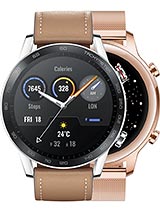
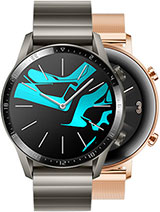
Honor MagicWatch 2 • Huawei Watch GT 2
The verdict
Huami clearly has its hand on the pulse of a large segment of the smart wearable market. While most big-brand players, like Apple and Samsung are sweating to come up with a full-featured flagship smartwatch, Huami has mostly been focusing on affordable, long-endurance wearables instead.
In terms of functionality, the T-Rex is really closer to a smart band than to a smartwatch. A smarter, more feature-rich smart band, yet still offering all of the value and battery endurance benefits. Still, it manages to visually distance itself from the plain band look and successfully recreates an iconic watch look. The end result is impressive on multiple levels.
The biggest letdown of the T-Rex overall experience is the lack of polish on a software level. The Amazfit OS, in its current state, is functional and well-refined. However, the Amazfit companion app is in desperate need of an overhaul and major UX simplification. The active third-party dev community has been putting in a lot of effort to remedy this, but that's not exactly the elegant, end-user solution the otherwise excellent T-Rex deserves.
Pros
- Iconic looks, solid build quality, 5 ATM water resistance and STD-MIL-810G certification.
- Vibrant OLED with responsive auto brightness, works well outdoors.
- Stellar GPS performance.
- Over 20 days of battery life on a single charge.
Cons
- Feels too light for its own good.
- Strap design is properietary.
- UI is not optimized for button-only navigation and yet the touchscreen doesn't work with gloves or wet fingers.
- Heart-rate monitoring and sleep tracking have room for improvement.
- The Amazfit smartphone app is unorganized and bloated. Multi-device support is not available.

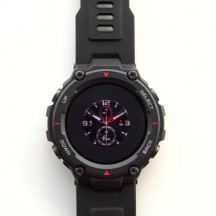














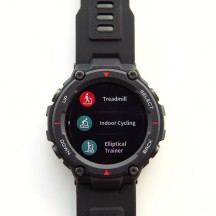

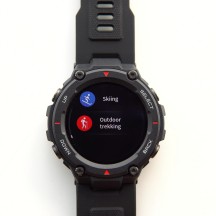
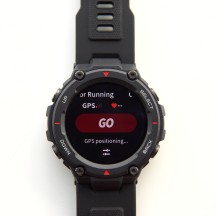





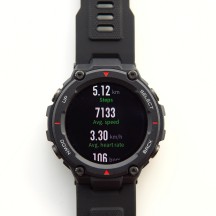
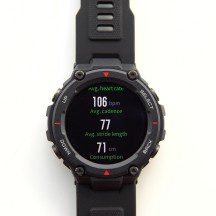
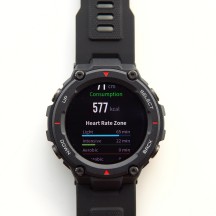
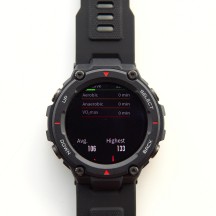
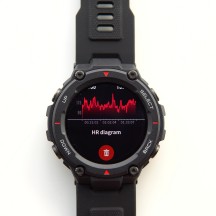
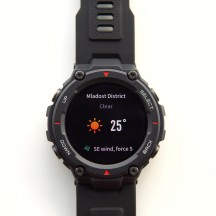
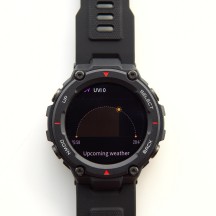

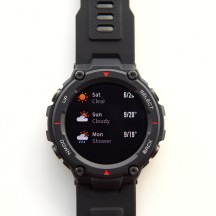

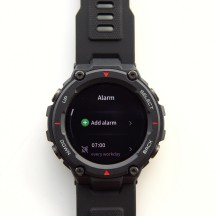
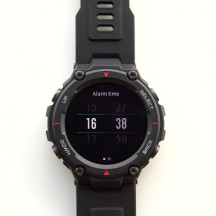
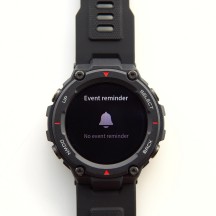
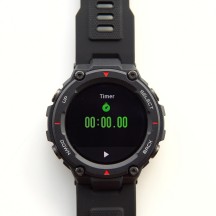
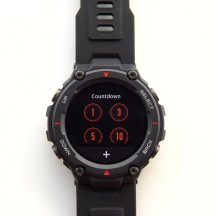
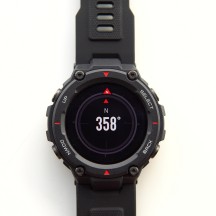
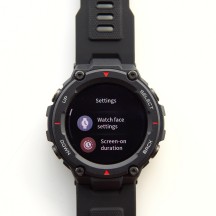
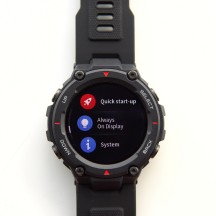
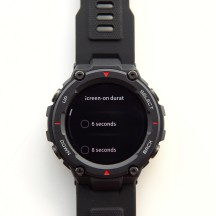
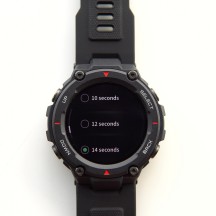
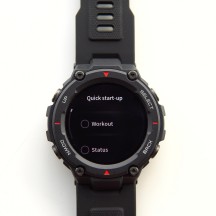
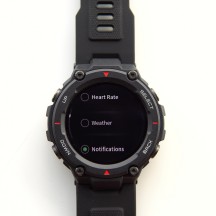
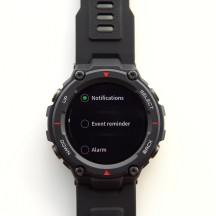
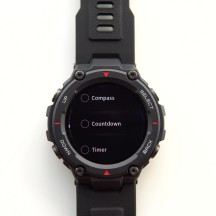
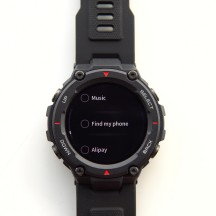
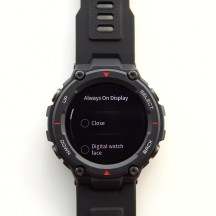
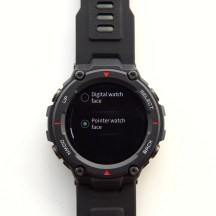















































Android Apps: Amazfit T-Rex Review >>>>> Download Now
ReplyDelete>>>>> Download Full
Android Apps: Amazfit T-Rex Review >>>>> Download LINK
>>>>> Download Now
Android Apps: Amazfit T-Rex Review >>>>> Download Full
>>>>> Download LINK